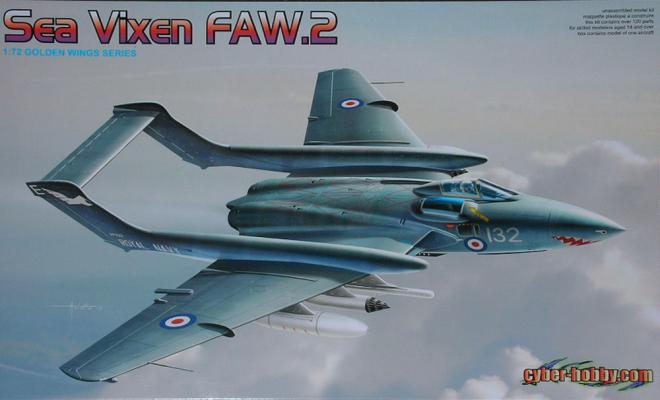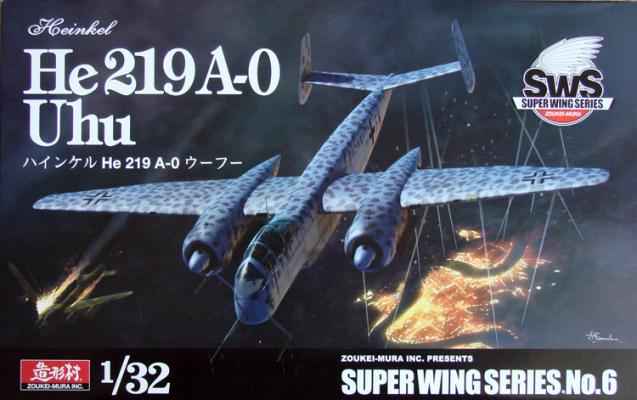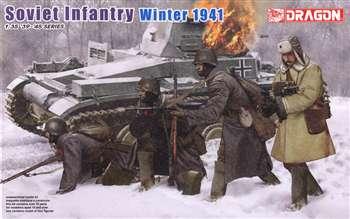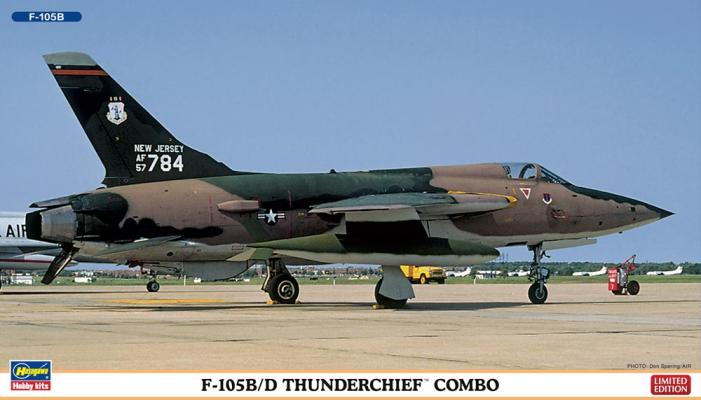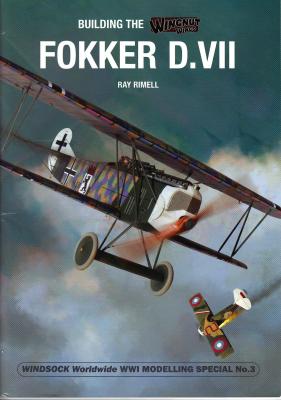The Vixen was originally developed for the RAF, but was turned down in favor of the Javelin for a missile-armed interceptor. The Fleet Air Arm picked it up and it was tailored to their needs, replacing the Sea Venom. The later versions, the FAW 2 (FAW=Fighter, All Weather) had saddle tanks added to the two booms to increase fuel capacity and thus range as well as better electronics. At the time, it was the heaviest aircraft ever operated by the FAA and was twice the size of the Venom it replaced. Due to all that weight, it only managed to be about 75 mph faster than the Venom, but it did carry the Red Top missile for air-to-air combat, which the Venom could not, as well as the Bull Pup air-to-ground missile. It served with the FAA from 1959 'til 1974.
Welcome to the IPMS/USA Reviews site!
Introduction: The primary organization of the IPMS/USA Review website is by IPMS/USA National Contest Class. Within each Class there are sub-menus by kits, decals, books, etc. The Miscellaneous Class is for items that are not class specific or that cross two or more classes.
IPMS/USA Members: We encourage you to submit reviews, both here and to the Journal. To volunteer for membership in the IPMS/USA "Reviewers Corps" and submit your own reviews, please read the Guidelines For Submitting Product Reviews.
Manufacturers, publishers, and other industry members: IPMS/USA is pleased to offer your company the opportunity for product reviews. All product reviews are performed by IPMS/USA members, and are posted in the publicly-accessible section of our website. With very few exceptions, we perform full build reviews of new kit releases, aftermarket products, and supplies. If you would care to provide product samples for review, please contact John Noack, IPMS/USA 1st VP.
To learn more about IPMS/USA, please see our About Us page.
Again, many, many thanks to Mr. Hideyuki Shigeta for honoring me with the privilege of building the Super Wing Series He 219 Uhu (Eagle Owl) model kit for public review as an IPMS Reviewer Corps representative. I am deeply appreciative of the trust and confidence shown in me by both Mr. Shigeta and the IPMS Reviewer staff. I am delighted to report on the last stages of construction!
When Germany invaded the Soviet Union in June of 1941, Hitler expected the whole country to fold quickly after the magnificent show of force of the German War Machine. But it was the Russian winter that slowed the German advance and forced them to go on the defensive. Unable to capture key cities like Mosow and Leningrad, and clad in their summer uniforms, the Germans faltered as the Soviets took the offensive, and served up Hitler’s first major defeat.
History Brief
When the F-105 Thunderchief entered service in 1958, it was the heaviest single-engine combat aircraft and was commonly known as the "Thud" by its crews. In March 1956 the USAF placed an order for 65 F-105Bs and 71 were built. Although it set speed records the 105B was besieged with problems, typically the F-105B required 150 hours of maintenance for each flying hour. Most of these problems were addressed under Project Optimize and by 1964 it was relegated to ANG squadrons.
Anyone who has peaked inside the box of a WingNut Wings 1/32nd WW1 aircraft kit knows the potential joys that await the builder of such a kit. If you are at all familiar with WW1 aircraft modeling, you will undoubtedly have heard of Ray Rimell’s Albatros Productions Ltd., publishers of Windsock International modeling magazine and Windsock Datafiles etc. So imagine my delight when IPMS USA gave me the opportunity to review a publication that combines the two: a Ray Rimell publication covering the building and detailing of WingNut Wings’ four 1/32nd Fokker D.VII kits! Read on……….











